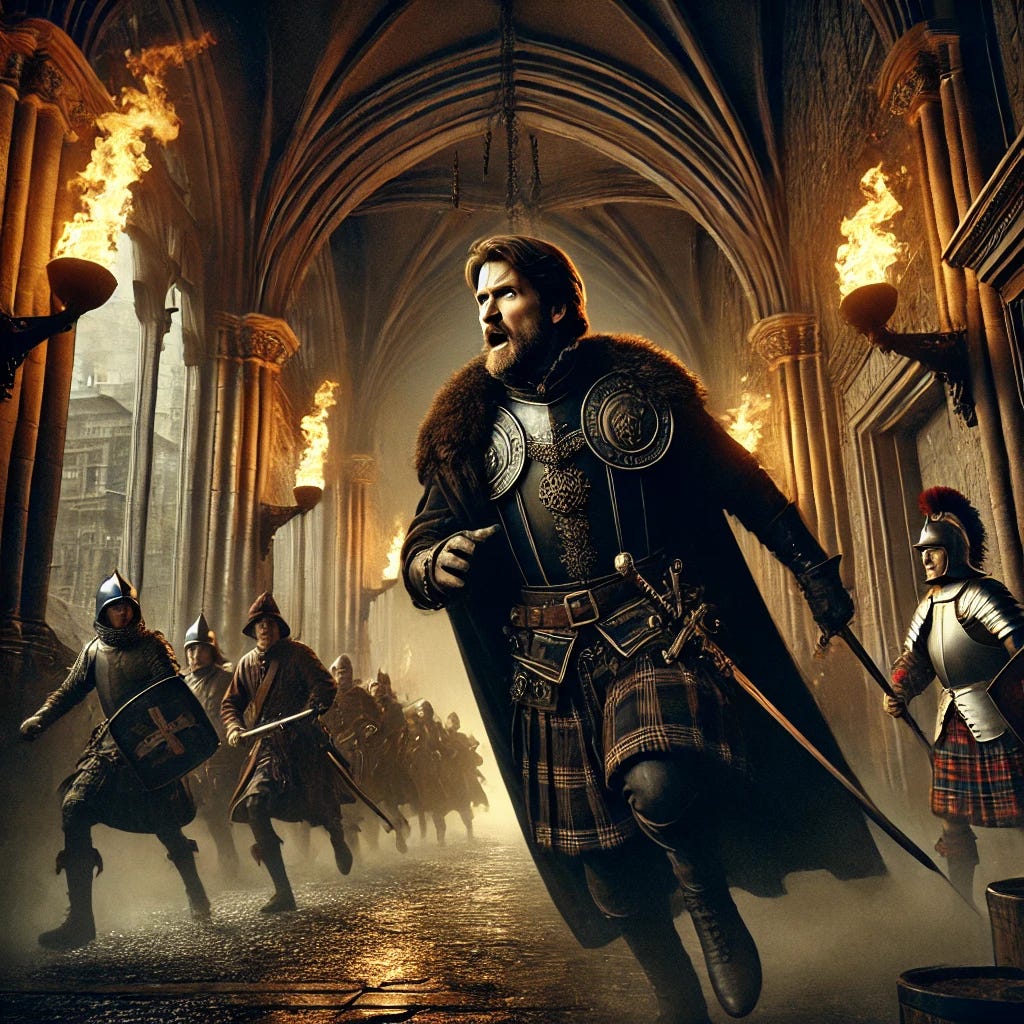Few figures in Scottish history embody the chaotic, rebellious spirit of the Borders quite like Francis Stuart, the 5th Earl of Bothwell. His life was a whirlwind of ambition, treachery, and defiance—marked by bold raids, political intrigue, and an unrelenting thirst for power. Unlike his infamous predecessor, James Hepburn, the 4th Earl of Bothwell—who was accused of murdering Lord Darnley and marrying Mary, Queen of Scots—Francis Stuart’s rebellion was not about love or royal marriages, but about control, revenge, and his reckless pursuit of the Scottish throne.
This is the story of a man who fought against his own king, rallied the most dangerous Borderers to his cause, and ultimately sealed his fate as one of Scotland’s most notorious outlaws.
Born to Power, Destined for Trouble
Francis Stuart was born into nobility, yet he was constantly at odds with the crown. As the grandson of King James V (through an illegitimate line), he had a strong claim to the throne of Scotland. His mother, Janet Hepburn, was the sister of the infamous James Hepburn, making Francis the heir to the Bothwell legacy—one already steeped in scandal and rebellion.
Despite his bloodline, Francis’s rise was not smooth. King James VI initially favored him, granting him the title of Earl of Bothwell and appointing him Keeper of Hermitage Castle, the stronghold of Liddesdale. This should have cemented his loyalty to the crown, but the restless, ambitious nature of Bothwell would not allow him to settle into a life of royal servitude. Instead, he saw himself as a rightful ruler, unjustly denied power by his cousin, the king.
Rebellion Against King James VI
By the 1580s, Francis Stuart’s relationship with James VI had soured. Rumors spread that Bothwell had consulted witches and necromancers, allegedly seeking their help in securing the throne. These accusations of witchcraft—deadly serious in that era—gave James VI the perfect excuse to turn against his once-trusted kinsman.
In 1589, Bothwell was arrested and imprisoned for his supposed involvement in witchcraft and conspiracy. However, being a Border lord with powerful allies, he managed to escape. This set the stage for a series of dramatic confrontations between Bothwell and the king.
Rather than seeking forgiveness, Bothwell did what he did best—he raised an army. He turned to the Borderers, the fierce and lawless clans of Liddesdale and Teviotdale, who had always been willing to defy the monarchy for the right price. With these men, Bothwell launched multiple raids against the king, including two failed attempts to seize James VI by force.
The Holyrood Raid (1591)
One of Bothwell’s most daring attempts to overthrow the king came in December 1591. In the dead of night, he led a band of armed men into the Palace of Holyroodhouse in Edinburgh, intending to capture James VI. The plan was bold but ultimately foolish. The king’s guards were caught off guard, and panic spread through the palace as Bothwell’s men stormed through the corridors shouting, “Justice! Justice! A Bothwell! A Bothwell!”
James VI barely managed to escape, barricading himself inside a secure chamber while reinforcements arrived. Bothwell and his men were driven out, forced to retreat into the shadows of the Borders. The event left James VI furious and determined to bring his rebellious cousin to justice.
The Raid on Falkland Palace (1592)
Undeterred by his failure, Bothwell tried again in June 1592, this time targeting Falkland Palace. The king was staying there at the time, and Bothwell once again attempted to capture him. Once more, however, his plan was thwarted, and James VI escaped unharmed.
By now, Bothwell had exhausted the king’s patience. James declared him a traitor, putting a hefty price on his head. With no allies left in court, Bothwell was now a hunted man, forced to live the life of an outlaw.
The Desperate End of a Fallen Earl
For the next few years, Francis Stuart wandered the Borders, moving between the strongholds of his dwindling supporters. At times, he sought refuge in England, even hoping that Queen Elizabeth might aid him in his cause. But she had no use for a reckless Scottish rebel and refused to support him.
By 1595, Bothwell’s influence had collapsed. The once-mighty earl, who had defied the king and led daring raids against the crown, was now a fugitive with nowhere to go. His estates were confiscated, and his titles stripped away. He eventually fled Scotland altogether, living in exile across Europe.
In his final years, he is said to have resorted to performing feats of arms, practicing necromancy, and telling fortunes to survive. This once-great nobleman, who had dreamed of ruling Scotland, died in obscurity in Naples in 1612. His name faded into history, overshadowed by the greater figures of his time.
Legacy of a Rebel Lord
The downfall of Francis Stuart, Earl of Bothwell, was the last great rebellion of the Scottish Borders. His story is a cautionary tale of ambition unchecked by wisdom. Unlike the earlier Bothwell, who rose and fell through his association with Mary, Queen of Scots, Francis’s rebellion was purely his own doing—driven by personal pride and the belief that he was destined for a greater role.
He is remembered not as a hero, but as a reckless figure—a man who underestimated the power of a determined king and overestimated his ability to rally the Borderers to his cause. His downfall marked the end of an era, as James VI consolidated his power and moved closer to uniting Scotland and England under one crown.
Though his rebellion failed, Francis Stuart remains one of the most fascinating and audacious figures in Scotland’s turbulent history. His story serves as a final, fiery chapter in the long legacy of the Border lords—a world of lawlessness, loyalty, and legendary defiance.





